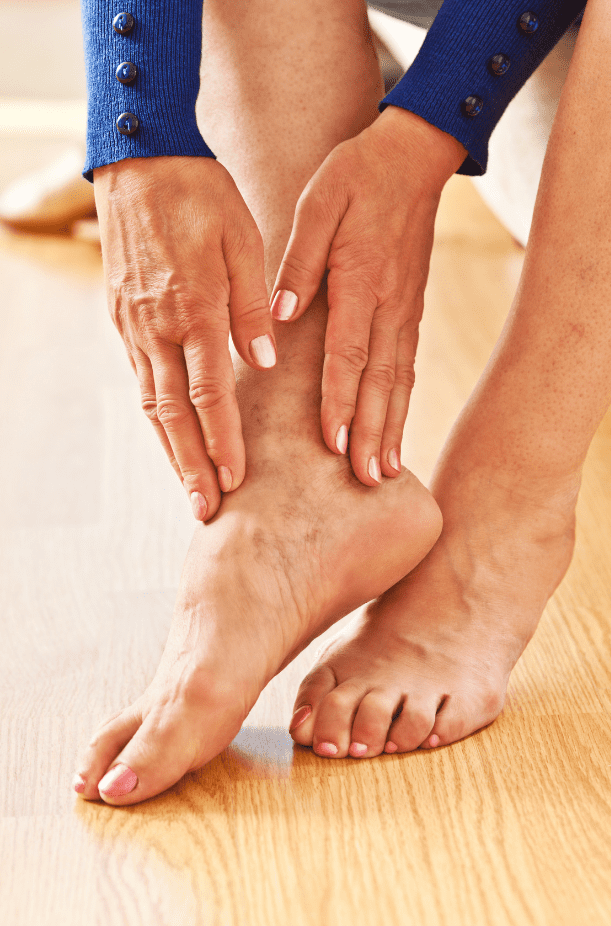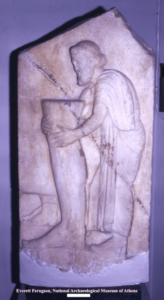
Have you been considering treatment for your varicose or spider veins, but feel nervous about the procedure? It may ease your mind to know that varicose vein treatment is one of the most common elective procedures today. Over a million people each year undergo vein treatment to get relief from tired, achy, or swollen legs.
Venous disease has been studied for millennia – it is not a modern development. Below we briefly explore the fascinating history of venous disease treatment, concluding with a look at the state-of-the-art technology utilized by Artemis Vein Center. It is important to understand how far vein treatment has advanced so that one doesn’t avoid it out of fear or misinformation.
An accurate understanding of how the systems of the body work took centuries to develop. In a famous document from the mid-16th century BCE known as the Ebers Papyrus, it is clear that Ancient Egyptians knew there was a connection between the heart and the arteries. However, they thought that, instead of blood, the heart moved air throughout the body.
This idea that the arteries circulated air in the body was still held by Greek scientific philosophers about twelve centuries later. When a person dies, blood drains into the veins, leaving the arteries clear. When scientists investigated the anatomy of a deceased person and found the arteries empty, they understandably hypothesized that their primary function was air circulation.
Misperceptions about the function of the circulatory system continued, as scientific philosophers assigned correct functions to some anatomical structures while assigning incorrect functions to others. For example, Galen, a physician living in Rome during the 2nd century CE understood that veins and arteries both carried blood, but did not recognize that they work together. He thought that veins carried blood from the liver, the arteries carried blood and air from the heart, and neither vessel returned blood back to their originating organs.
Varicose veins have difficulty returning blood to the heart because they have lost some of their structural integrity. Over time, these veins begin to bulge and may have a “snaky” appearance. An ancient Egyptian papyrus written between 1580-1320 BC describes varicose veins in just this way, as being “sinuous and serpentine.”
Early doctors were very familiar with varicose veins and developed treatments for them. There is even an illustration of a varicose vein from the fourth century BC on the Acropolis in Greece! It is likely that this statue was dedicated to Doctor Amynos, one of the earliest phlebologists. The leg depicted shows clearly the winding vein that so many recognize today.
Hippocrates, one of the founders of medicine, recommended elevating and compressing the leg to relieve the discomfort of venous disease. No doubt modern compression stockings, which are a non-invasive, first approach to treating varicose veins, would have been welcomed in ancient medical practices.
Roman physicians attempted to treat varicose veins using quite painful techniques that were made worse because effective anesthesia was unavailable. Gaius Marius, a Roman general, suffered from varicose veins in both legs. He agreed to undergo surgery but the operation on the first leg was so painful that he refused treatment on the second, saying that the pain was too overwhelming to justify the cure. Fortunately, we have the option of local anesthesia, which makes vein procedures essentially painless.
suffered from varicose veins in both legs. He agreed to undergo surgery but the operation on the first leg was so painful that he refused treatment on the second, saying that the pain was too overwhelming to justify the cure. Fortunately, we have the option of local anesthesia, which makes vein procedures essentially painless.
Fast forward to the 19th century, when doctors began developing treatments for varicose veins that would evolve into some of the more modern approaches that exist today. As with any new technique, however, early attempts at remedies presented challenges. One physician in France, for example, developed a treatment that at first seemed like it would be a breakthrough in vein therapy. However, this particular approach was abandoned after several of the patients developed gangrene from the procedure. It would be hard to be one of these early patients who served as a guinea pig for doctors paving the way to the excellent treatment options that we enjoy today.
Currently there are a variety of approaches to treating varicose veins and all have their merits. The most advanced technology, however, is utilized in a technique known as laser ablation. An ultrasound is used to evaluate the treatment site. As a side note, it was in 1960 that ultrasound technology, which was first developed to locate submarines during World War II, was employed to observe the circulation of blood as it moves through blood vessels.
After the vein is examined thoroughly using the ultrasound, a local anesthetic is administered to numb the area to be treated. This anesthetic also serves to protect the skin from being damaged during the procedure. Finally, the doctor inserts a thin filament into the vein that has a laser on the end of it. Heat energy from the laser closes the vein as it is withdrawn.
Laser ablation has been used for over a decade and is now one of the most popular approaches to vein therapy. It is a minimally-invasive, cost-effective, and highly-successful treatment, and the preferred option at Artemis Vein Center. At Artemis we take pride in using the most advanced technology currently available, the CoolTouch™ laser, to ensure that our patients have the best experience possible. We are dedicated to remaining on the cutting edge of vein treatment therapies.
While lifestyle, such as sitting or standing too much, can contribute to the formation of varicose veins, an individual may develop this issue because of family history, or after experiencing a major bodily change such as pregnancy. Around one quarter of American adults suffer from some type of venous disease. So, remember: if you have varicose veins, you are in good company! This is a common ailment that, as we’ve seen, has been experienced by people throughout history – even Roman generals. Fortunately, we no longer have to rely on painful outdated methods to alleviate the symptoms of venous disease.
If you experience any signs of venous disease in your legs (such as feelings of heaviness, pain, or swelling), or have noticed varicose or spider veins, it would be worth calling Artemis to discuss your symptoms and learn about some of the possible treatment options. If a procedure is necessary, you’ll be in excellent hands and enjoy the benefits of the CoolTouch™ laser, the culmination of centuries worth of medical advancement.
Works consulted:
https://www.phlebolymphology.org/history-of-venous-surgery-1/
https://www.phlebolymphology.org/history-of-venous-surgery-2/
https://www.ncbi.nlm.nih.gov/pmc/articles/PMC3036286/
https://www.annalsofvascularsurgery.com/article/S0890-5096(09)00317-3/abstract